Mastering Dolch Sight Words: A Kindergarten Guide
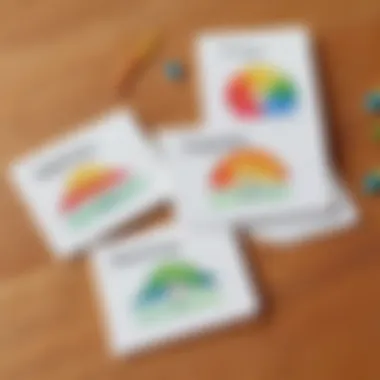
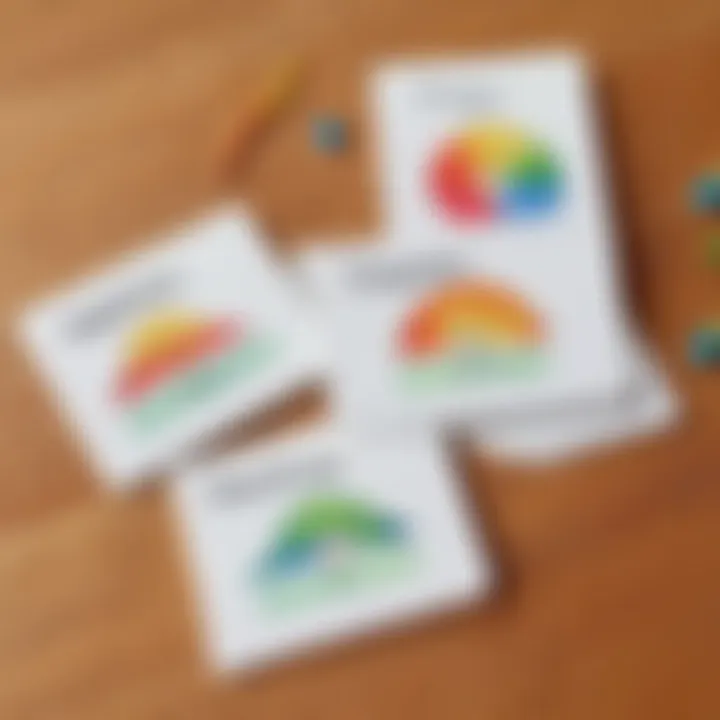
Intro
Dolch sight words are essential for early literacy development. These words, often referred to as "high-frequency" or "sight" words, make up a significant portion of written material. For kindergarten learners, mastering these words can develop their reading proficiency. This guide serves to provide educators and parents with insights into the importance of Dolch sight words. Through effective strategies and engaging activities, children can cultivate their reading skills in enjoyable and meaningful ways.
Creative Activities
Engaging kindergarten learners through creative activities can greatly enhance their understanding and retention of Dolch sight words. Here are some suggestions:
Craft Ideas
- Sight Word Bingo: Create bingo cards with various sight words. Children can mark off the words as they are called out, reinforcing recognition in a fun format.
- Sight Word Collage: Provide magazines, scissors, and glue. Ask children to find words from the Dolch list and paste them onto a poster board. This reinforces recognition and allows for creativity.
- Word Rocks: Gather smooth stones. Have children paint sight words on the rocks. These can be placed around the classroom or home to serve as visual reminders.
Step-by-Step Guides
Sight Word Bingo
- Materials: Pre-made bingo cards, markers.
- Instructions:
- Distribute bingo cards and markers.
- Call out sight words randomly.
- Children cover the called words until someone gets a bingo.
Sight Word Collage
- Materials: Magazines, scissors, glue, poster board.
- Instructions:
- Children search through magazines for sight words.
- Cut them out and paste them onto the poster.
- Share the collages with the class.
Educational Value
These activities not only make learning fun but also enhance fine motor skills and foster creativity. Repeated exposure to sight words through these crafts helps reinforce recognition, ensuring deeper learning.
"Integrating play with literacy encourages children to engage more actively with the material they encounter."
Fun Quizzes
Quizzes can be an effective tool in assessing a child's grasp of sight words. They can also reinforce learning in a structured manner.
Quiz Topics
- Recognition of Dolch sight words.
- Contextual usage of sight words in simple sentences.
- Spelling of commonly used sight words.
Question Types
Engaging children can be achieved through various question formats:
- Multiple choice questions to test recognition.
- Fill-in-the-blank sentences to assess contextual understanding.
- Matching words with images to connect vocabulary with visual cues.
Knowledge Reinforcement
Quizzes lend a framework for parents and educators to track progress. Regular quizzes serve to reinforce knowledge through repetition. This repetition solidifies the foundation of early literacy.
Fact-Based Articles
Fact-based articles present valuable information on the importance of sight words and effective teaching methods.
Topics
- The role of sight words in developing reading fluency.
- Various strategies to teach sight words effectively.
- The connection between sight word mastery and enhanced comprehension skills.
Engaging Content
These articles present information in a straightforward way, making it easy for educators and parents to grasp complex concepts surrounding early literacy. Simplified language and practical examples enhance understanding.
Understanding Dolch Sight Words
Dolch sight words are fundamental to early literacy. These words, which frequently appear in children's reading material, are essential for developing fluent reading skills. Understanding Dolch sight words allows teachers and parents to focus on words that help children recognize text more seamlessly, fostering engagement with reading. For kindergarten students, familiarity with these words accelerates reading proficiency, and enhances overall literacy confidence. This section explores the definition, historical background, and categories of Dolch words, providing a solid foundation for their significance in literacy education.
Definition and Purpose
Dolch sight words refer to a list of commonly used words that young children should recognize immediately without needing to sound them out. These include terms like "the," "and," "it," etc. The primary purpose of learning these words is to facilitate reading fluency. As young learners become familiar with these terms, their cognitive resources are freed from decoding, allowing them to focus on comprehension and enjoy the story as a whole. The development of sight word recognition is crucial, as it lays a solid groundwork for future academic success in reading.
Historical Context
The Dolch list originated from Edward William Dolch's research in the 1930s. Dolch was an educator who studied children's reading materials, subsequently determining that certain words appear most frequently. His findings led to the compilation of a list consisting of 220 basic sight words, along with an additional list of 95 nouns. These words are designed for children aged from preschool to third grade. Understanding this historical context can shed light on how literacy education has evolved and why sight words remain relevant in modern classrooms.

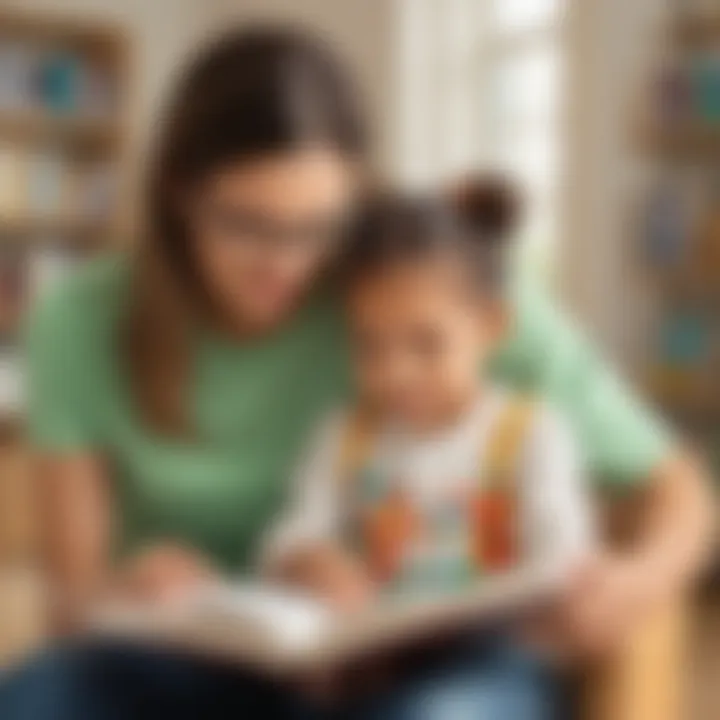
Categories of Dolch Words
Understanding the different categories of Dolch sight words allows educators to tailor their approach to reading instruction based on children’s educational level. The categories include Pre-Primer, Primer, Grade One, Grade Two, and Grade Three, each significant in developing reading skills. Each category escalates in complexity, ensuring children's progressive mastery of sight words.
Pre-Primer
The Pre-Primer category contains the most basic sight words suitable for emergent readers. Key characteristics include simplicity and frequency. Words like "go," "see," and "you" are essential in crafting early reading experiences. This category is a beneficial choice for this article, as it enables children to build confidence quickly. The unique feature of Pre-Primer words is their prevalence in early reading materials. However, some may find these words too simplistic, potentially stalling enthusiasm in some learners passionate about more complex texts.
Primer
The Primer category includes slightly more challenging words, such as "up," "down," and "good." This set helps bridge the gap from Pre-Primer to Grade One. It is beneficial for young readers trying to advance their skills. The unique feature is the increasing complexity in sentence construction that can be built from these words. Despite this, it might pose challenges for some children who may not be ready for additional difficulty.
Grade One
Grade One sight words, which include terms such as "can," "not," and "one," expand vocabulary and reading competence. These words are commonly found in early reader books, making them critical for foundational literacy. They contribute to constructing a wider vocabulary and enhancing reading flow. A notable feature is their use in simple sentences. However, for some learners, memorizing additional words may feel overwhelming, posing a potential challenge.
Grade Two
The Grade Two category introduces more complex sight words, such as "may," "said," and "fun." These words are essential in enriching children's reading materials. The key characteristic is enhanced sentence structure that allows for more comprehension. Understanding these words is beneficial as they form the building blocks of more advanced texts. One drawback could be the inconsistency in retention, as some children struggle with memory.
Grade Three
The Grade Three words are often the most advanced in the list, containing terms like "again," "because," and "different." This category is crucial as it prepares students for higher-level texts. The key characteristic is fostering critical reading skills that empower young readers to engage fully with stories. However, the increased difficulty may be a challenge for some, requiring more sustained support from educators and parents to ensure success.
Significance of Dolch Sight Words in Early Literacy
Understanding the significance of Dolch sight words is crucial for foundational reading skills in kindergarten learners. These words, which appear frequently in English texts, serve as essential building blocks for literacy. Recognizing these words enables children to progress toward fluent reading.
Early exposure to Dolch sight words not only enhances reading capabilities but also boosts children's confidence. Children gain a sense of achievement when they can recognize and read these words with ease, thus fostering a positive association with reading activities.
Foundation for Reading
Dolch sight words provide a strong foundation for reading. By learning these common words, children can more easily recognize them in daily reading materials. This recognition allows for smoother and faster reading, as these words often do not follow standard phonetic rules.
The emphasis on sight words helps develop sight word vocabulary, which is necessary for reading fluency. Fluency is the ability to read text accurately and quickly. A fluent reader can focus on understanding the material rather than expending energy decoding each word. Dolch sight words offer vital exposure to frequently-used vocabulary, ensuring that children can engage with a variety of texts.
Cognitive Development
Teaching Dolch sight words contributes significantly to children's cognitive development. By recognizing and recalling these words, children enhance their memory skills. This process is not only about memorization but also involves making mental connections with those words.
Moreover, working with sight words promotes critical thinking. Children begin to recognize patterns in language and understand the structure of sentences, which deepens their comprehension abilities. As they progress, they become better prepared to tackle more complex texts and engage with stories on a deeper level.
In summary, the significance of Dolch sight words is evident in early literacy. They create a strong foundation for reading competency and foster cognitive skills that are essential for overall learning. Recognizing the impact of these words is vital for educators and parents alike in shaping literacy habits in young children.
Strategies for Teaching Dolch Sight Words
Teaching Dolch sight words effectively is crucial for young learners. These words are frequently encountered in children's literature and mastering them aids in building confidence in reading. Teaching strategies must be diverse and adaptable to cater to different learning styles, ensuring that every child can engage successfully.
Utilizing Repetition
Repetition is a fundamental technique in reinforcing learning. When students are exposed to the same sight words frequently, their familiarity increases. This can be accomplished through various methods such as daily drills, interactive games, or repetitive reading sessions. Using repetition not only helps in retention but also offers students a sense of success as they recognize words they previously found challenging.
"Repetition is key to solidifying memory in young learners."
Incorporating repetition can take several forms:
- Flashcards: These can be used daily to review sight words. Kids can read them aloud, sometimes even in short bursts to keep engagement high.
- Songs and Rhymes: Putting sight words to music can make them more memorable. Kids often recall words better when they are associated with a tune.
- Writing Practice: Having children write sight words repeatedly can also enhance memory. This method combines kinesthetic learning with cognitive recall.
Incorporating Visual Aids
Visual aids play a pivotal role in literacy education. They not only capture the attention of young learners but also provide a solid context for understanding. Children often benefit from associating words with images or colors.
Here are effective ways to utilize visual aids:
- Posters and Charts: Displaying sight words in classrooms with colorful posters can be eye-catching and promote memorization.
- Interactive Whiteboards: Digital platforms can present sight words interactively. Games that involve dragging and dropping sight words next to their corresponding images can be stimulating.
- Illustrated Books: Choosing books that feature Dolch sight words prominently encourages recognition while engaging children with a story.
Engaging with Contextual Reading
Contextual reading is the practice of reading words within the context of sentences or stories rather than in isolation. This method helps students see how sight words function in real-life reading scenarios.
Here are ways to implement contextual reading:
- Shared Reading: Reading aloud with children allows them to hear the rhythm of language while pointing out sight words.
- Sentence Creation: Ask students to create sentences using specific sight words. This practice helps them understand how words fit together meaningfully
- Story Time with Focus: Identify sight words beforehand in a story. As children listen or read, they can find and point out those words, enhancing both recognition and comprehension.
By implementing these strategies, educators can effectively teach Dolch sight words in engaging ways that foster a love for reading while building skills needed for literacy.
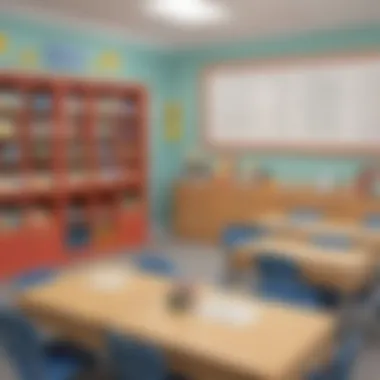
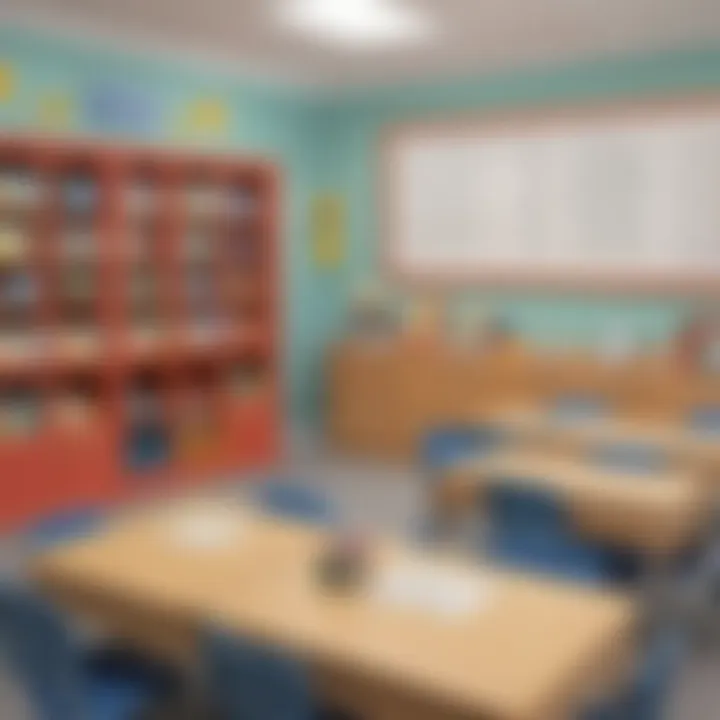
Practical Activities for Kindergarten Students
Engaging kindergarten students with practical activities is essential to support their learning of Dolch sight words. These activities can reinforce their understanding through fun and interactive methods. Children at this age thrive on hands-on experiences, which makes it necessary to incorporate various approaches that cater to their interests and learning styles.
Incorporating practical activities not only aids retention but can also enhance motivation. Activities designed around movement and play can help solidify concepts and improve comprehension. Here are some effective activities:
Flashcard Games
Flashcard games are a classic method for teaching Dolch sight words. They can promote recognition in a dynamic way. Flashcards can be used in various games. For example, children can play "Memory" by matching cards. This helps them learn to recognize words by sight effectively.
Another game is the "Speed Round" where children flip cards and read them as fast as they can. This promotes quick recognition and can be quite exhilarating for young learners. Teachers or parents can add rewards to encourage participation. These rewards could be simple stickers or praise.
Story Creation Exercises
Story creation exercises allow children to utilize sight words creatively. Once students have learned a set of words, guide them to write simple stories that incorporate these words. They can create silly or imaginative tales, making the process entertaining. This exercise not only enhances their vocabulary but also develops their storytelling skills.
To facilitate this, educators can provide prompts or themes. This could range from topics like animals to a day in their life. Working in pairs can also be beneficial. It fosters collaboration and further allows learners to engage with peers while using Dolch sight words.
Sight Word Scavenger Hunts
Sight word scavenger hunts blend learning with physical activity, which can be particularly effective for kinesthetic learners. Adults can create a list of sight words and hide cards with these words around a designated area, like a classroom or playground. Students can search for the words and bring them back.
When they find a word, they should say it out loud. This reinforces their ability to recognize the word in different contexts. Additionally, this activity can be adapted by organizing it into teams, which promotes teamwork as well.
Engaging children in creative and active learning experiences can make a significant difference in their understanding of Dolch sight words. These activities provide not just educational value but also the opportunity for fun and social interaction among peers.
Assessment Methods for Sight Word Recognition
Assessing sight word recognition is a crucial aspect of early literacy education. It provides teachers and caregivers with valuable insights into a child's reading progress. Effective assessment methods facilitate the identification of strengths and weaknesses in sight word recognition. This allows for targeted instruction, ensuring that each child's reading skills are developed appropriately.
The use of assessment methods also helps in tracking progress over time. By regularly monitoring a child's ability to recognize sight words, educators can determine whether their teaching strategies are effective. This ongoing evaluation can lead to adjustments in instruction, ultimately enhancing the learning experience.
Moreover, assessment practices foster a collaborative environment between teachers and parents. When parents are involved in understanding their child's reading progress, they can support learning at home. This partnership ensures that children receive consistent messages about the importance of sight word recognition.
Progress Monitoring
Progress monitoring is an essential strategy for assessing sight word recognition in kindergarten students. It involves observing a child's performance over time through regular assessments. Educators can implement brief, structured assessments that focus on sight word recognition.
For instance, a teacher may conduct weekly sight word quizzes. These quizzes give immediate feedback on a child's recognition abilities. Furthermore, teachers can track results in a progress chart. This can clearly highlight improvements or setbacks, allowing timely intervention when necessary.
Incorporating progress monitoring may involve various methods, including:
- One-on-one assessments focused on sight word lists
- Timed readings where children read familiar texts to illustrate fluency
- Observation during group activities to assess interaction with peers
Tracking progress in these ways not only gives educators valuable information but also builds a child's confidence. When children see their improvement, they gain motivation to continue learning.
Use of Sight Word Checklists
Sight word checklists are valuable tools for evaluating sight word recognition. Educators can create personalized checklists aligned with the Dolch sight word lists for different grade levels. These checklists serve as a reference for both teachers and parents.
Using a checklist allows teachers to assess specific words that a child can or cannot recognize. As students learn new words, they can be marked off. This process helps in planning future lessons based on the child's needs. Parents can also use these checklists at home, ensuring that practice extends beyond the classroom.
Some key benefits of sight word checklists include:
- Simplified tracking of sight word mastery
- Identification of recurring mistakes, which aids in targeted teaching
- Motivation for children to complete checklists as they see progress visually
When children are actively involved in checking off words they know, it creates a sense of ownership over their learning. This simple act can transform the approach to reading.
Checklists not only streamline assessment but also enhance engagement among young readers.
Challenges in Teaching Dolch Sight Words
Teaching Dolch sight words presents several challenges that educators and parents must navigate. The success of early literacy efforts often hinges on overcoming these obstacles. Recognizing these challenges is critical, as they affect the effectiveness of teaching strategies and the retention of sight words by young learners.
One of the most significant challenges is the diversity of learning styles among children. Not all students absorb information in the same way. Some may respond better to visual aids, while others favor auditory or kinesthetic approaches. This variability means that a one-size-fits-all method is ineffective. Educators are tasked with identifying the unique needs of each child. This approach allows for tailored strategies that can improve engagement and retention of sight words.
Additionally, this diversity can require more planning and resources. Teachers must be flexible, often adapting their lessons and activities to fit different learning preferences. This effort can sometimes feel overwhelming, especially in a classroom with many pupils. If the method does not resonate with a child, the learning process can stall.
The second challenge relates to retention issues. Even after children have been exposed to Dolch sight words through various activities, they do not always retain them long-term. Repetition is essential, but many young learners quickly forget words that are not reinforced consistently over time. This phenomenon can cause frustration for both students and educators.
To address retention concerns, it's essential to employ varied techniques. Regular review sessions can help solidify memory. Integrating sight words into other subjects can weave them into the fabric of everyday learning. Additionally, involving families in this process can enhance retention. By encouraging parents to engage in sight word practice at home, children get opportunities to connect words with their surroundings, enriching their understanding.
In summary, addressing the challenges in teaching Dolch sight words requires a multifaceted approach. By recognizing diverse learning styles and tackling retention issues, educators can create an effective learning environment.
"Education is not the learning of facts, but the training of the mind to think."
— Albert Einstein
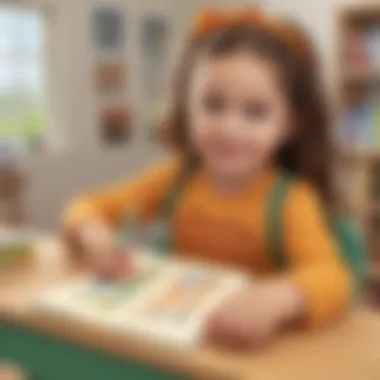
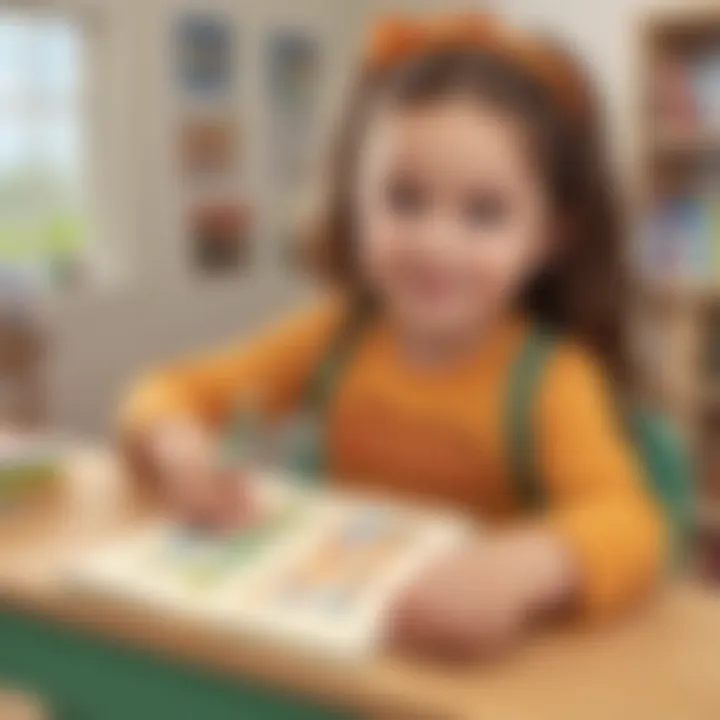
It is crucial for educators and parents alike to understand these obstacles. By doing so, they can implement strategies that promote better literacy outcomes for young students.
Resources for Educators and Parents
Educators and parents play a critical role in developing early literacy skills using Dolch sight words. Access to appropriate resources is essential. These resources can enhance teaching effectiveness and support children's learning experiences. When educators and parents combine efforts, they can create a consistent and supportive environment for young learners.
Books and workbooks are traditional yet powerful tools that can provide structured learning. They often contain lists of Dolch sight words organized by grade levels, along with exercises to reinforce these words. Through these materials, children can practice at their own pace.
Online platforms and tools also offer numerous benefits. Many websites provide interactive activities that engage children while they learn. These platforms often include games, videos, and quizzes that target sight word recognition. The variety in modes of learning can address different interests and keep students invested.
"Effective resources for teaching can transform the reading journey for kindergarten children."
Parents should consider incorporating both types of resources. Books and workbooks can be used during family reading time. Online tools are ideal for when children can explore independently. This dual approach can foster a love for reading while ensuring the child's reading skills develop.
Combining traditional methods with digital resources encourages a balanced learning experience. It's important to regularly assess children’s progress to adjust the resources being used. This flexibility allows parents and educators to respond to individual needs and preferences.
In summary, having access to a mixture of resources empowers both educators and parents. It ensures that children receive varied and rich experiences as they learn Dolch sight words, laying a solid foundation for their literacy development.
Books and Workbooks
Books and workbooks are fundamental components in the arsenal of resources for teaching Dolch sight words. These materials often present Dolch words in an organized manner that aligns with the grade-level stages such as Pre-Primer, Primer, and the respective Grade levels.
A well-structured workbook may include exercises such as:
- Word recognition tasks
- Writing practice for sight words
- Contextual reading passages
Such activities establish familiarity with the words and improve retention. A book that includes engaging stories featuring sight words can also help contextualize their use, making them more relatable for children. Series like "The Bob Books" or materials from Scholastic are notable examples that effectively combine story and practice.
Furthermore, printed flashcards can be found in many workbooks. These cards enable tactile learning opportunities through interactive games and activities. This approach often leads to better engagement from the learners.
Online Platforms and Tools
The advent of technology has greatly enriched the landscape of educational resources. Numerous online platforms now focus on teaching Dolch sight words, providing diverse opportunities for engaging learning. Websites like Starfall or ABCmouse offer interactive games tailored specifically for young readers.
These platforms frequently provide:
- Reading games that reinforce recognition of sight words
- Quizzes to assess knowledge and progress
- Videos that explain concepts in child-friendly language
- Printable resources that can be used offline
Online tools allow for individualized learning experiences. Children can learn at their pace, revisiting content as needed. In addition, such resources often include reports or feedback mechanisms that parents can use to track their child's progress.
Integrating Dolch Sight Words in Daily Practice
Integrating Dolch sight words into daily practice is crucial for reinforcing the skills needed for reading fluency in young learners. This step bridges the gap between isolated learning and practical application. By incorporating these sight words into everyday activities, educators and parents foster an environment where language skills can flourish. It enhances both recognition and comprehension, making reading a more enjoyable experience for children.
Connecting with Other Subjects
Incorporating Dolch sight words across different subjects enriches the learning experience. For instance, integrating sight words into mathematics through simple word problems can help children recognize and understand context. Using sight words in science can involve labeling items in the classroom or discussing experiments. This cross-disciplinary approach not only reinforces the recognition of sight words but also shows children the relevance of language in various contexts.
Some strategies for connecting Dolch words with other subjects include:
- Creating themed lessons: Use sight words when introducing new subjects. For example, while learning about animals, display words like "dog" and "cat" in appropriate contexts.
- Interactive notebooks: Combine sight words with project-based learning. Students can create notebooks where they design pages related to different subjects while integrating target sight words.
- Language-rich environments: Label objects in the classroom to integrate vocabulary without direct instruction. This can make learning more organic and engaging.
Encouraging Family Involvement
Family involvement plays a significant role in the integration of Dolch sight words into daily practice. Encouraging parents to engage with their children using sight words fosters a supportive learning environment at home. When families participate, children feel a strong sense of support, thus enhancing their motivation to learn.
Parents can help incorporate sight words in various ways:
- Reading together: Choose books that contain Dolch sight words. This not only helps with recognition but also strengthens family bonds.
- Sight word games: Families can play simple word games like bingo or flashcards. Such activities promote fun while learning.
- Daily conversations: Encourage parents to use Dolch sight words in everyday conversations. Simple phrases including these words can enhance familiarity and comfort.
By integrating Dolch sight words into different areas of learning and encouraging family involvement, children will have multiple opportunities to practice. This consistent exposure supports their literacy development effectively.
Important Note: Consistency in practice is key. Repeated exposure will lead to increased recognition and confidence in reading.
The End
The conclusion serves a pivotal role in summarizing the insights presented throughout this article regarding Dolch sight words for kindergarten children. A well-structured conclusion not only consolidates key takeaways but also underscores the practical significance of sight words in early literacy development.
Recap of Key Points
To recap, several crucial elements emerge regarding Dolch sight words:
- Definition: Dolch sight words form a set of commonly used words in the English language, vital for developing fluent reading skills.
- Teaching Strategies: Techniques such as repetition and the use of visual aids enhance recognition and retention of these words.
- Practical Activities: Engaging exercises, such as flashcard games and scavenger hunts, make the learning process interactive and enjoyable.
- Assessment Methods: Monitoring progress through sight word checklists ensures effective recognition and helps to identify areas needing improvement.
- Challenges: Understanding diverse learning styles and addressing retention issues are essential for successful teaching practices.
These key points highlight the foundational role of Dolch sight words in fostering literacy among young learners.
Future Directions in Literacy Education
Looking ahead, literacy education must evolve to adapt to the dynamic needs of students. Future directions to consider include:
- Incorporating Technology: Embracing digital tools and apps can benefit interactive learning. Online platforms that engage children through games may improve their sight word recognition skills.
- Personalization: Tailoring instruction to meet individual learning styles would enhance the effectiveness of teaching methodologies. Differentiation in activities can cater to various proficiency levels.
- Expanded Resources: Providing educators with new resources, such as interactive lesson plans and comprehensive reading programs, will support effective teaching of sight words.
- Emphasis on Parent Involvement: Encouraging families to participate in their children’s literacy journeys can create a more supportive learning environment at home.







